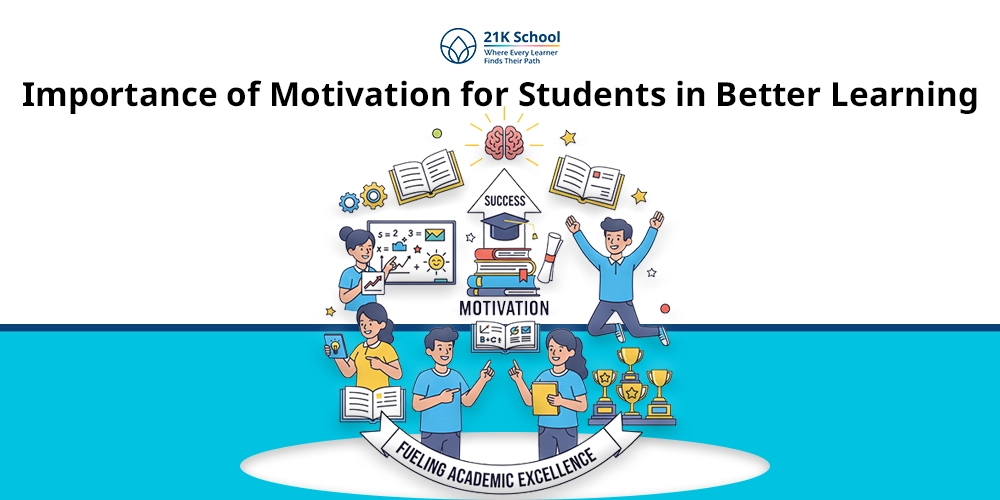
Do you ever wonder why teamwork is a fundamental life skill?
Teamwork is the capacity of people to collaborate collectively. Another important skill that helps students learn through collaborative skills, as well as it helps students to develop communication skills
.
Educational teamwork can be seen as learning-by-doing experiences through which children collaborate towards a common purpose. Teamwork also extends beyond school or sports and is a valuable life skill that helps children develop in the future as well.
Cooperation enables children to learn from other peers as well as allows them to experience learning something new. Working with others in team projects and group assignments gives children a way to work in teams.
Collaborative working also permits children to engage in the active solutions of different angles on the problem, thus decreasing the time it takes to solve a particular problem.
Contents
- 1 What’s Educational Teamwork?
- 2 Components of Teamwork
- 3 13 Importance of Teamwork for Students
- 3.1 1. Boost Confidence
- 3.2 2. Improves Motivation and Engagement
- 3.3 3. Enhance Problem-solving Skills
- 3.4 4. Promotes Empathy
- 3.5 5. Develops Social and Emotional Skills
- 3.6 6. Inculcates Leadership Qualities
- 3.7 7. Adds in Academic Performance
- 3.8 8. Prepares for Career Ahead
- 3.9 9. More Cultural Diversity
- 3.10 10. Conflict Resolution
- 3.11 11. Helps in Time Management
- 3.12 12. Promotes a Collaborative Learning Environment
- 3.13 13. Boost Communication Skills
- 4 Real world Examples and Case Studies Focusing on Importance of Teamwork for Students
- 5 Conclusion
What’s Educational Teamwork?
Whenever we think about teamwork the first thing that comes to our mind is business or entrepreneurship. This is mainly because the term is mostly related to business.
Teamwork is related to education as it is an active learning method in which every student learns in a group. This allows them to think about the same concepts from different perspectives.
Teamwork places a strong emphasis on education because it allows students to learn in a collaborative learning environment. Teamwork helps in developing problem-solving skills among children enabling them to solve problems from different perspectives.
Teamwork can be implemented into education by incorporating group activities, group discussions, group projects and so on, which allows children to interrelate different objectives.
Components of Teamwork
The components of teamwork are also known by the C’s of teamwork. Mainly team work has 5 vital C’s known as Communication, Confidence, Coachability, Commitment and Camaraderie.
These components are essential for enhancing the teamwork abilities of individuals and are widely used in the corporate sector as well as schools. Here are the components of teamwork mentioned below.
1. Communication
Communication is the most important component of teamwork, as teamwork requires clear communication between all the members. Effective eye-contact communication skills helps in avoiding any misunderstanding as well as allows to take proper decisions without any conflicts.
Communication is not only limited to listening or sharing thoughts instead it is a process of clarifying the doubts and providing feedback.
2. Confidence
Confidence is another key element in teamwork which helps in enhancing creative thinking skills among students. Through confidence and motivation children are better able to take part in group activities as well as share their viewpoints.
Confidence allows individuals to work together towards a common goal enabling them to think out of the box.
3. Coachability
Coachability refers to the openness and participation of students into group activities. Team members must have willingness to learn from mistakes and develop positive ideas to share their viewpoints.
Coachability helps in improving the overall performance of individuals and enhances their interest towards learning.
4. Commitment
Commitment is another important factor for indulging in teamwork in which every member shares a common goal towards a particular work. Commitment is necessary to finish the work on time as well as take responsibility for future outcomes.
Active commitment of children in group activities allows them to think from different perspectives and take challenges as opportunities.
5. Camaraderie
Camaraderie is trust and respect between team members. Creating respect, empathy and trust is essential for a positive learning environment among students.
13 Importance of Teamwork for Students
The following are the importance of teamwork for students.
1. Boost Confidence
Teamwork allows children to improve their confidence through active participation of students in group activities. This allows them to develop collaboration skills , which is an important factor in order to receive the desired results.
Confidence is vital in both academic and professional life to enable students to actively interact with others towards a common goal.
2. Improves Motivation and Engagement
Motivation and student engagement are a result of teamwork which allows students to work in a shared context.
Teamwork allows children to develop a sense of belongingness among students as well as allows them to work on shared projects. Motivation towards education enables students to get free from study stress and boost their confidence.
3. Enhance Problem-solving Skills
Students who indulge in teamwork are better able to develop problem-solving skills . Teamwork helps kids learn to view problems as possibilities rather than obstacles, to develop perspectives other than their own and share these with others.
This helps in creating a cooperation between team members, enabling them to share their thoughts in order to eliminate the problems through best possible solutions.
4. Promotes Empathy
Teamwork is also known for promoting empathy among children towards others. Teamwork allows children to understand the perspective of other children and enables them to develop compassion towards others.
Through empathy children are better able to think from different perspectives and empathize with the feelings and emotions of other pupils.
5. Develops Social and Emotional Skills
Children who work in a team have better social and emotional skills as compared to others. Group workload allows students to develop social skills such as communication skills, empathy, emotional intelligence and so on.
Social and emotional learning skills are important for both academic and professional life.
6. Inculcates Leadership Qualities
Students who work in a team develop leadership skills which allows them to take responsibility for their tasks.
Through teamwork students work together in order to achieve a common goal, which allows them to develop responsibilities towards their work. Leadership skills are important for group success through which desirable goals can be achieved together.
7. Adds in Academic Performance
Teamwork is not only limited to work or employment but also helps in enhancing the academic performance of students.
Working in teams helps children to see concepts from different angles and to solicit help from others which helps them to clear their doubts and perform better in exams. Proper preparation helps in avoiding exam stress and prepares students for higher education.
8. Prepares for Career Ahead
Teamwork is also known for providing career opportunities to students through which they can work together as a team.
Teamwork also teaches students with other life skills such as communication skills, collaboration skills, stress management skills , decision-making skills and so on. These vital skills are necessary to work in a collaborative setting where every individual is required to share their viewpoints.
9. More Cultural Diversity
Teamwork is known to enhance the cultural awareness among students. Through teamwork children are better able to understand others’ feelings and cultures which also allows them to develop empathy.
Empathy is important for developing diversity among children and allows them to perceive others. Through team work children can work with anyone irrespective of culture, background, and history making it ideal to develop cultural interests.
An inclusive learning environment is created through collaborative learning, which gives equal learning opportunities to every individuals
10. Conflict Resolution
Working together enhances social interaction and allows children to experience perspective thinking as well as interactions with other people.
This way, children can be more empathetic of others and are better at conflict resolution. It enables them also to be more reflective and effectively engaged.
11. Helps in Time Management
Teamwork helps develop time management skills by learning to use time efficiently. As teamwork allows children to work cooperatively, it allows them to achieve the goal at the same time through proper coordination.
Working in a team helps in saving time as everyone can think or work on the same task together, which helps in avoiding time wastage. Proper time management skills in children helps in enhancing self-esteem as well as simplifies complex content.
12. Promotes a Collaborative Learning Environment
Teamwork assists in creating a collaborative learning environment in which every student can work together. Through teamwork students work towards a common goal, share their viewpoints and see challenges as opportunities instead of obstacles.
13. Boost Communication Skills
Teamwork is also known for enhancing the communication skills of children. As, the collaborative learning nature allows students to effectively indulge in both verbal and non-verbal communication through sharing of ideas and perspectives.
Through this students are better able to connect with others by the means of sharing of ideas, thoughts, viewpoints, as well as dialogues. Effective communication skills are necessary to avoid any jargon or misunderstanding.
Explore 15 fun and interactive communication activities for students .
Real world Examples and Case Studies Focusing on Importance of Teamwork for Students
Here are some real-life case studies of team work.
1. Chandrayaan 3 Mission
Chandrayaan 3 mission is a popular mission that shows teamwork helps in achieving a common goal towards a shared mission. Chandrayaan 3 is a moon exploration mission, in which a team of different scientists and professionals were collaborated in order to execute a plan.
Chandrayaan 3 teaches the use of teamwork and collaboration in order to get positive results. The strategy of teamwork allows us to execute perfect plans for problem solving .
2. Study Groups
Study groups are an effective way to develop a cooperative learning environment where every student can study collaboratively.
Through group studies children are better able to study with other peers and clear their doubts and draw possible solutions for complex topics. This allows students to enhance their learning efficiency and make study more impactful.
3. Google AI Research Team
Google AI research team is an example of team work in which every researcher works with data engineers in order to integrate new learning methods of AI inputs.
This teamwork allows them to work in a shared objective for the consideration of new ideas. This example allows students to show how teamwork helps in accomplishment of work for a shared objective.
4. Sports and Games
Sports and games are an incredible example for teamwork. In sports students work in a team to make effective strategies in order to win the game. This collaboration requires coordination, communication, trust and leadership skills to achieve a common goal.
Conclusion
Teamwork provides a collaborative experience allowing students to work in a team collaboratively. Through group work students can work together in the same project, enabling them to discuss, share, and think from the same perspective.
Teamwork allows students to develop confidence, empathy, cultural awareness, leadership skills and so on. This is essential in order to work together towards a common goal.
Teamwork is also known for enhancing the memory retention of children as well as developing communication skills and collaboration skills among children. It is important for kids to develop teamwork skills at an early age, which will help them in achieving their academic goal as well as career goals.


